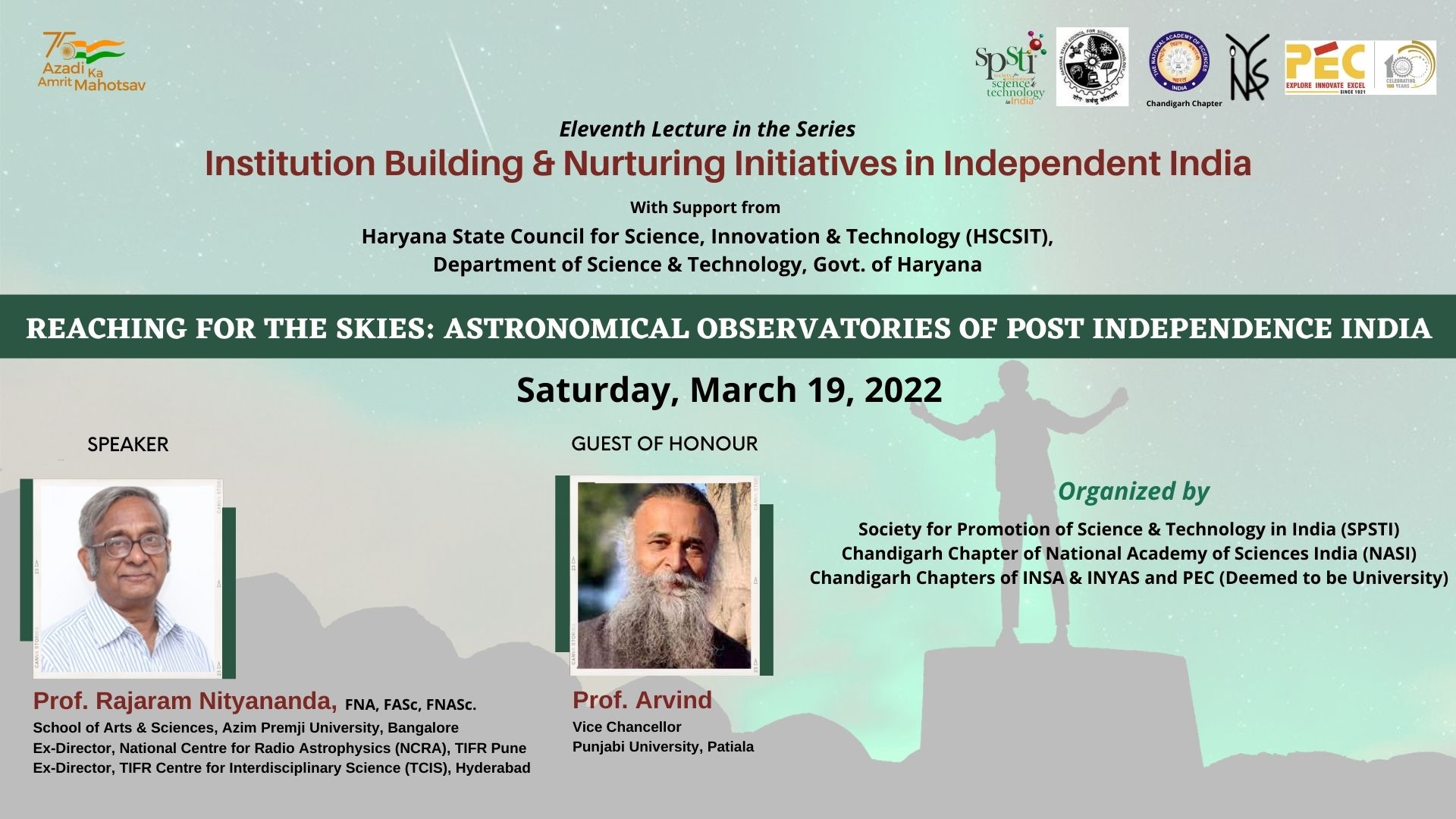The universe has always been making men curious since the origin of the mankind. Humans have always been fascinated to discover the unknown and in this quest, a number of technologies have emerged to study the hidden truths of the universe and the celestial bodies. An inspiring talk on the development of astronomical observatories in India was delivered today by Prof. Raja Ram Nityananda who is Ex-Director of National Centre for Radio Astrophysics (NCRA, Pune). He delivered a talk on “Reaching for the Skies: Astronomical Observatories of Post Independence India” on the joint forum of Society for Promotion of Science & Technology in India (SPSTI) and Chandigarh Chapters of NASI, INSA, INYAS and PEC, Chandigarh. The lecture was supported by Haryana State Council for Science, Innovation & Technology, DST, Govt. of Haryana. Prof. Arvind, Vice Chancellor of Punjabi University was invited as the Guest of Honour. Prof. Nityananda, began with introducing about some observatories from early times – Nizamiah Observatory (1901) at Osmania University, Kodaikanal Solar Observatory (1899), Uttar Pradesh State Observatory (1953), Ooty Radio Telescope (1966) etc. Then the modern solar telescope came in as part of the International Geophysical Year in 1957 and some radio monitoring of the sun also started. Prof. Nityananda also shared pictures of many observatories including modern solar telescope in Korekano, solar astronomy at Udaipur, run by the physical research Ahmedabad, VainuBappu Observatory in Javadi, Tamil Nadu, Ooty Radio telescope and Mount Abu Observatory and also gave a brief overview of these observatories. He further shared in detail about the currently active observatories namely Astrosat launched on September 28, 2015, Observatory at Ladakh, Aries, NCRA-TFR, GMRT, Khodad. He talked about the observatories in the Himalayas and HCT is actually one of the telescopes. A major work has been done by Indian Institute of Astrophysics to survey site and instrumentation at a height of 4,500 metres and lot of effort has been made to ensure remote operation. Being on such height it opens to near infrared, polarimetry and spectroscopy which is particularly important to study newly formed stars, planetary systems He also mentioned about the future international mega projects like Square Kilometre Array, Thirty Metre Telescope, LIGO India. Most of these collaborations came post-independence where credibility was set up by building indigenous system. Prof. Arun K Grover, former VC of Panjab University and Vice President of SPSTI presented the concluding remarks and vote of thanks. The session was much appreciated by the audience and followed with lively questions and discussion. Other members present were Ms. Rajni Bhalla, Dr. Rishemjit Kaur, Dr. Rohit Sharma and many other participants.

